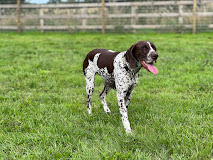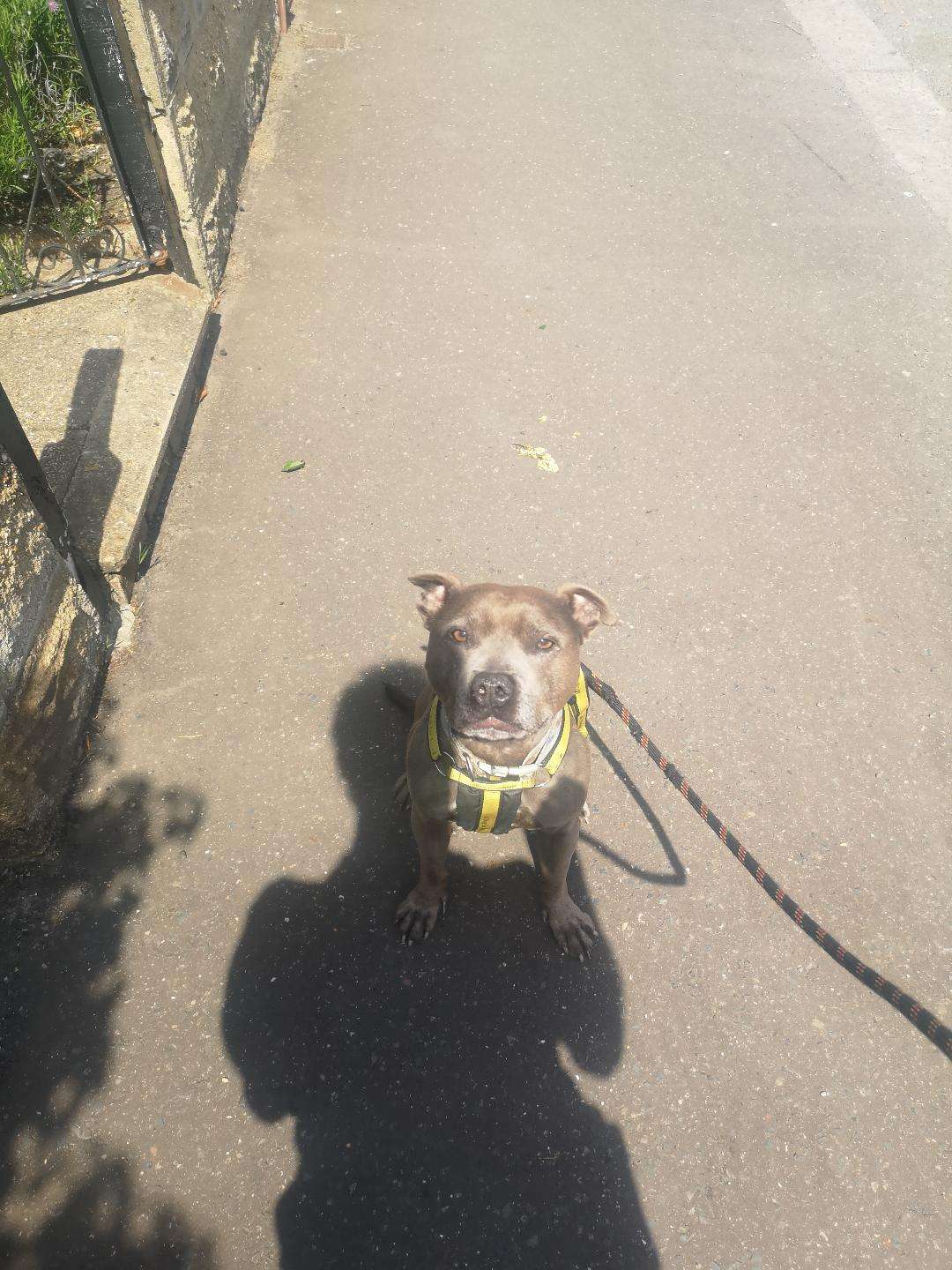Dogs are our furry companions, but unlike humans, they don’t communicate with words. Instead, they rely on a complex system of body language to express their emotions and needs. By learning to “read” these signals, you can unlock a deeper understanding of your dog and build a stronger bond.
The Importance of Context
When interpreting your dog’s body language, remember that there’s no one-size-fits-all answer. A wagging tail, for example, can signify happiness, excitement, or even nervousness. The key lies in considering the whole picture. Think about the Ears, Eyes, Mouth, Tail, Posture and the context they are in. For example a wet dog staking is probably not stressed.
Also what is below is far from an exhaustive list. I once saw a Facebook post asking for unique signs a dog is stressed which probably had over 65 signs. I added two more including a dog sniffing!
Lastly what is normal for your dog? For example some dogs their tail is always up where as others is always down.
Excited and Happy Dog:
Movement is generally faster and flowing.
- Zoomies
- Quick movements
- Barking
- Tail up or out
Relaxed and Happy Dog:
Movement if generally flowing and slower.
- Loose and wiggly body posture
- Tail wagging freely from side to side, or round in a circle
- Ears perked up or hanging naturally
- Soft eyes with a relaxed brow
- Open mouth in a relaxed pant (during play) or closed mouth with no tension
- Relaxed movements
Alert and Curious Dog:
- Ears forward, focused on something interesting
- Wide eyes taking in the surroundings
- Tail held high or wagging slightly
- Body posture evenly balanced on all four paws
- Slower more deliberate movements
Passive stress coping mechanism:
This is where a dog tends to shut down when stressed. They might cower lay down, or tremble. However this can dog a dog becomes stuck in situation gathering more stress and then suddenly flip into aggression.
In human terms this could when someone is endless annoying another but they are trying not to rise to it but as the layers pile on the quitter they get until they aren’t!
- Calming signals: These are appeasement behaviors your dog uses to de-escalate a situation. Watch for:
- Yawning
- Lip-licking
- Looking away or turning the head
- Slow, hesitant movement
- Shake off, this really does shake off the stress
- Tucked tail between the legs or low sometimes laying down as well.
- Low body posture, crouching down
- Raised hackles (fur standing on end)
- Lowered body posture, possibly rolling over on the back usually with the tail between their legs
- Ears flattened against the head
- Avoiding eye contact or squinting including things like sniffing the ground
- Tense mouth with lips pulled back in an “appeasement grin” (exposing front teeth)
- Sitting or laying down. *
*This is often the case for young puppies that are overloaded with information when starting to walk or dogs that don’t want to continue. Either because of expectation or physical pain. It also tend not to look stressed and sometimes labeled as stubbornness.
Active stress coping mechanism:
This is when a dog tries to deal with the situation. They may try to actively engage with the source of their stress, like barking at a perceived threat. Blood tests have show that do being active the amount of cortisol reduces. Who doesn’t feel better after shouting at someone.
This doesn’t mean that we should encourage these actions however it doesn’t meant that by punishing a dog for barking they may learn that being a passive coper is best but this is harder to train a dog out of is nor is it fair on the dog.
- Fixed stare with narrowed eyes and a wrinkled brow
- Tense body posture with stiff legs
- Snarling, snapping or barking
- Ears forward or pinned back.
- Tail held high and stiff, or low and tucked between the legs or wigging to the left
- Charging forwards
- Running away or to a place to hide
- Zoomies
It’s important to remember that sometimes excitement and fear can be difficult to distinguish. Here’s a real-life example: a friendly Springer Spaniel would run towards my dog, tail wagging, seemingly encouraging play. She would then run round and back to me. On the third occasion letting out little squeals. However, what I’d missed was that the tail wags were actually to the left. After speaking to the pet parent. What was happening was the dog was charging in fear but was too friendly to show any other sign and was then running round to the nearest cover. My legs as I was sitting down.
Worried about to stress out your dog and need a dog trainer. We are always happy to help.


